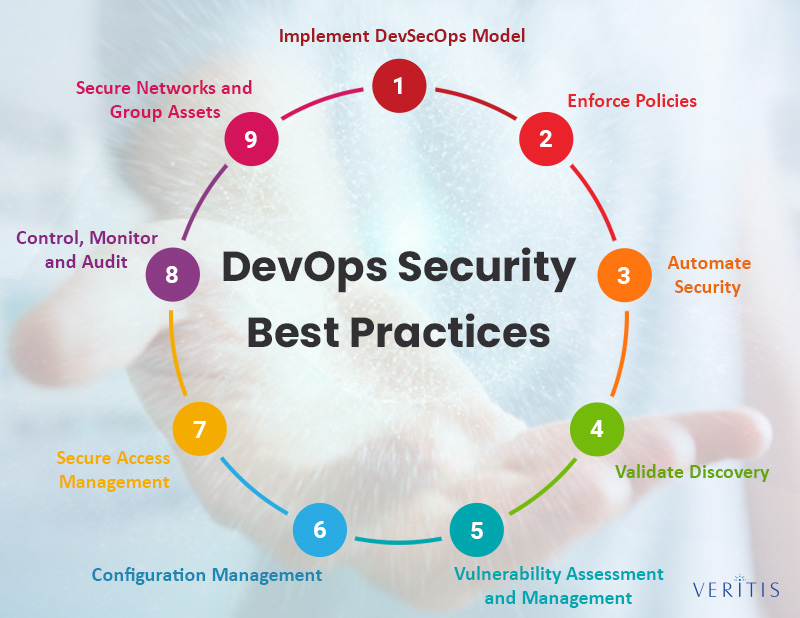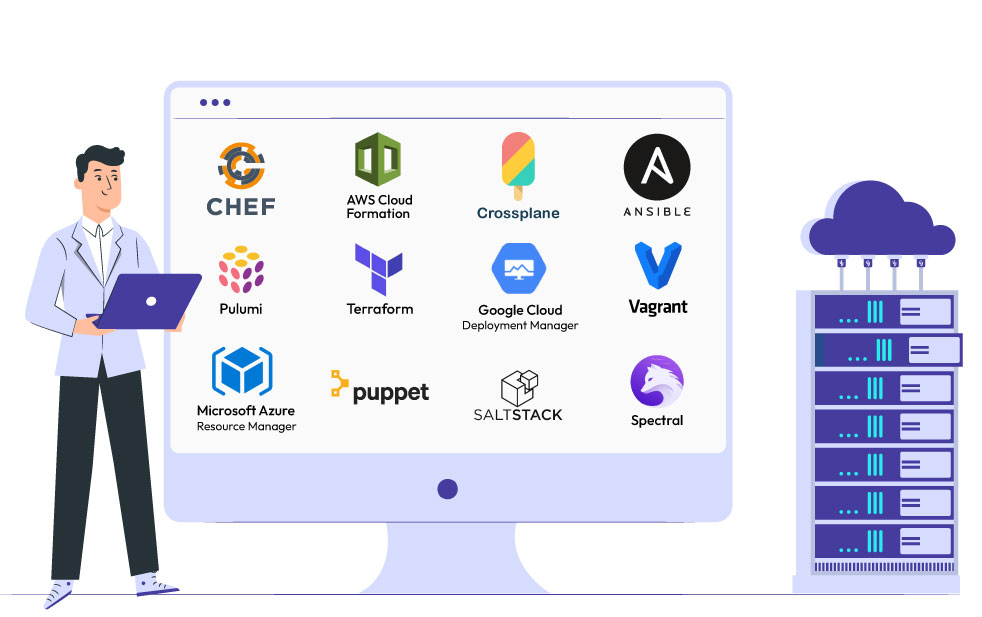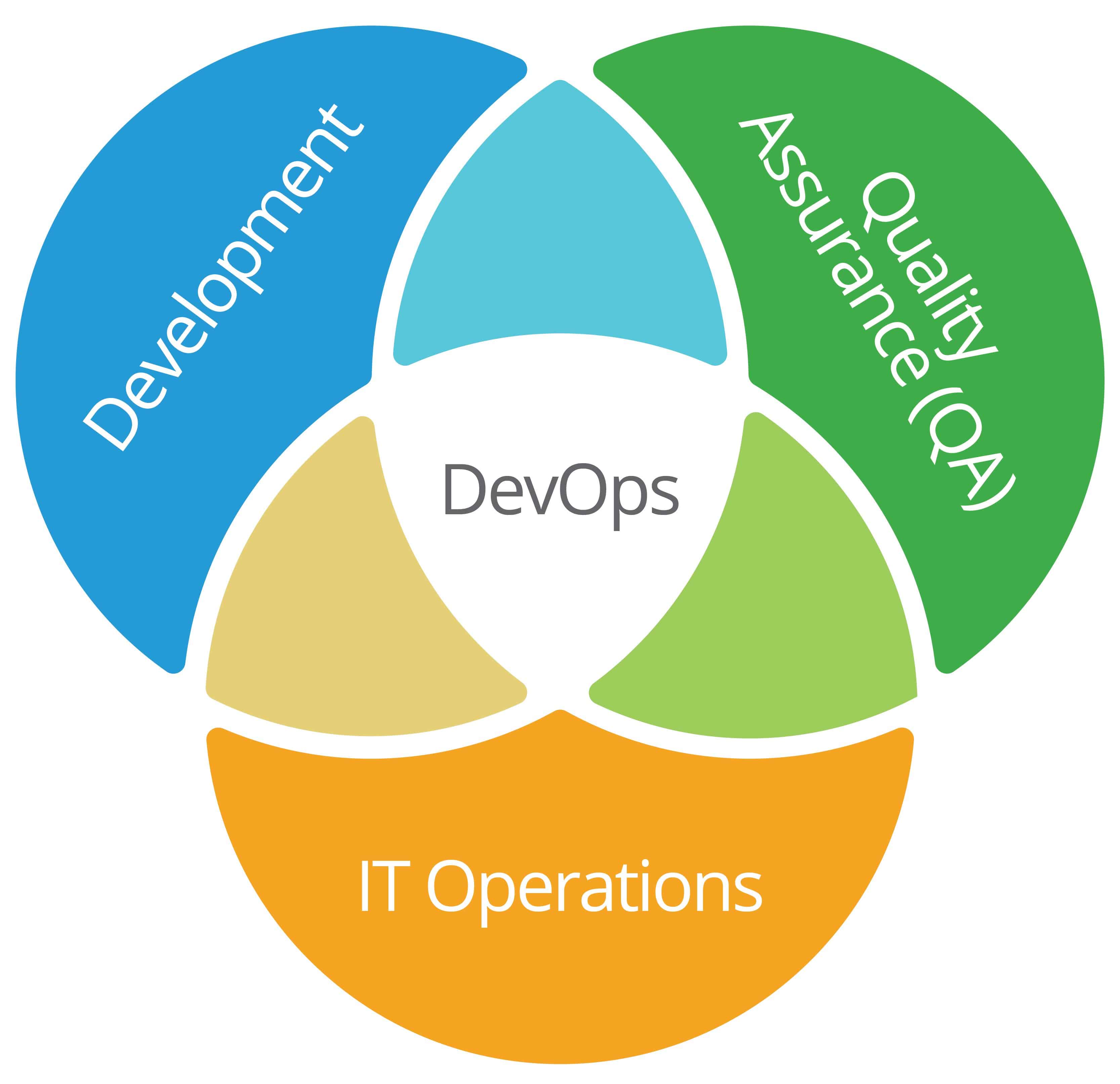The Power of Cloud-based DevOps Tools and Practices
Cloud-based DevOps tools and practices have revolutionized the way software development and operations teams collaborate and deliver value to their customers. By leveraging the power of the cloud, organizations can take advantage of increased collaboration, scalability, and cost savings. Real-life examples of successful implementations include industry leaders such as Netflix, Amazon, and Google, which have embraced cloud-based DevOps to streamline their development processes and achieve rapid innovation.

Key Cloud-based DevOps Tools and Solutions
Cloud-based DevOps tools and platforms have gained significant traction in recent years, offering a wide range of features and capabilities to streamline software development and deployment processes. Here are some popular cloud-based DevOps tools and their primary use cases:
AWS CodeStar
Amazon Web Services (AWS) CodeStar is a cloud-based service that simplifies the creation, management, and deployment of software applications. It provides an integrated development environment (IDE) and supports popular programming languages such as Java, Python, and JavaScript. AWS CodeStar enables teams to collaborate on projects, manage code, and deploy applications quickly and efficiently.
Google Cloud Build
Google Cloud Build is a fully managed continuous integration and continuous delivery (CI/CD) service that enables developers to build, test, and deploy applications in various languages and environments. It integrates seamlessly with other Google Cloud services and popular third-party tools, allowing teams to automate their development workflows and ensure consistent, reliable deployments.
Microsoft Azure DevOps
Microsoft Azure DevOps is a comprehensive set of cloud-based DevOps tools that includes source control, continuous integration, continuous delivery, and project tracking capabilities. It supports various programming languages and platforms, enabling teams to plan, build, test, and deploy software across multiple environments. Azure DevOps also provides extensive customization options and integrations with popular tools such as GitHub and Slack.
Atlassian Bitbucket Pipelines
Atlassian Bitbucket Pipelines is a cloud-based CI/CD service integrated into Bitbucket, a popular source code repository. It allows developers to automate their build, test, and deployment processes directly from their source code repository. Bitbucket Pipelines supports various languages and platforms, enabling teams to create customized workflows and deploy applications quickly and efficiently.
IBM Cloud Continuous Delivery
IBM Cloud Continuous Delivery is a cloud-based DevOps platform that automates the software delivery process, from code commit to deployment. It supports various languages and platforms, enabling teams to create customized workflows and deploy applications across multiple environments. IBM Cloud Continuous Delivery also provides extensive integrations with popular tools such as Jenkins and GitHub.

Implementing Infrastructure as Code (IaC) with Cloud-based Tools
Cloud-based DevOps tools and practices have revolutionized the way organizations manage and deploy infrastructure. One such concept is Infrastructure as Code (IaC), which involves managing and provisioning infrastructure resources using configuration files rather than manual processes. IaC enables teams to automate infrastructure management, ensuring consistency, version control, and faster deployment.
Cloud-based tools have made it easier than ever to implement IaC. These tools provide features such as version control, configuration management, and automated deployment, enabling teams to manage infrastructure resources more efficiently. Here are some examples of cloud-based DevOps tools that facilitate IaC implementation:
- Terraform: Developed by HashiCorp, Terraform is an open-source IaC tool that enables teams to define and manage infrastructure resources as code. It supports various cloud providers, including AWS, Google Cloud, and Microsoft Azure. Terraform provides features such as version control, resource dependency management, and automated deployment, enabling teams to manage infrastructure resources consistently and efficiently.
- AWS CloudFormation: AWS CloudFormation is a cloud-based IaC tool that enables teams to define and manage AWS infrastructure resources using configuration files. It provides features such as version control, resource dependency management, and automated deployment, enabling teams to manage AWS infrastructure resources consistently and efficiently.
- Azure Resource Manager (ARM) Templates: Azure Resource Manager (ARM) Templates are a cloud-based IaC tool that enables teams to define and manage Azure infrastructure resources using configuration files. They provide features such as version control, resource dependency management, and automated deployment, enabling teams to manage Azure infrastructure resources consistently and efficiently.
Implementing IaC with cloud-based tools offers several advantages, including:
- Consistency: IaC enables teams to manage infrastructure resources consistently, ensuring that resources are configured and deployed in the same way every time. This consistency reduces the risk of errors and inconsistencies that can occur with manual processes.
- Version Control: IaC enables teams to manage infrastructure resources using version control systems, enabling them to track changes, revert to previous versions, and collaborate more effectively.
- Faster Deployment: IaC enables teams to automate infrastructure deployment, reducing the time and effort required to deploy infrastructure resources. This automation enables teams to deploy infrastructure resources more quickly, reducing lead times and increasing agility.
In conclusion, implementing IaC with cloud-based tools is a critical aspect of cloud-based DevOps practices. Cloud-based IaC tools provide features such as version control, configuration management, and automated deployment, enabling teams to manage infrastructure resources more efficiently. By implementing IaC with cloud-based tools, teams can ensure consistency, version control, and faster deployment, reducing the risk of errors and increasing agility.

Streamlining CI/CD Pipelines with Cloud-based DevOps
Cloud-based DevOps tools and practices have significantly improved Continuous Integration and Continuous Deployment (CI/CD) processes. By automating various stages of the software development lifecycle, cloud-based DevOps tools enable teams to deliver high-quality software more efficiently and effectively. Here are some examples of streamlined workflows and improved collaboration between development and operations teams using cloud-based DevOps tools:
- Automated Testing: Cloud-based DevOps tools enable teams to automate testing processes, reducing the time and effort required to test software. For instance, tools like AWS CodeBuild and Google Cloud Build provide automated testing features, enabling teams to test software in various environments and configurations. Automated testing also reduces the risk of errors and inconsistencies that can occur with manual testing processes.
- Automated Deployment: Cloud-based DevOps tools enable teams to automate deployment processes, reducing the time and effort required to deploy software. For instance, tools like Azure DevOps and AWS CodePipeline provide automated deployment features, enabling teams to deploy software to various environments and configurations. Automated deployment also reduces the risk of errors and inconsistencies that can occur with manual deployment processes.
- Improved Collaboration: Cloud-based DevOps tools enable teams to collaborate more effectively by providing features such as real-time communication, shared workspaces, and automated notifications. For instance, tools like Slack and Microsoft Teams provide real-time communication features, enabling teams to communicate and collaborate more effectively. Similarly, tools like GitHub and Bitbucket provide shared workspaces, enabling teams to collaborate on code development and review processes.
Streamlining CI/CD pipelines with cloud-based DevOps tools offers several advantages, including:
- Faster Deployment: Cloud-based DevOps tools enable teams to automate various stages of the software development lifecycle, reducing the time and effort required to deploy software. This automation enables teams to deploy software more quickly, reducing lead times and increasing agility.
- Improved Collaboration: Cloud-based DevOps tools enable teams to collaborate more effectively by providing features such as real-time communication, shared workspaces, and automated notifications. This collaboration reduces the risk of errors and inconsistencies that can occur with manual processes.
- Reduced Risk: Cloud-based DevOps tools enable teams to automate testing and deployment processes, reducing the risk of errors and inconsistencies that can occur with manual processes. This automation also enables teams to test software in various environments and configurations, reducing the risk of software failures in production environments.
In conclusion, cloud-based DevOps tools have significantly improved CI/CD processes by automating various stages of the software development lifecycle. By streamlining CI/CD pipelines with cloud-based DevOps tools, teams can deliver high-quality software more efficiently and effectively. Cloud-based DevOps tools provide features such as automated testing, automated deployment, and improved collaboration, enabling teams to reduce the time and effort required to deploy software, improve collaboration, and reduce the risk of errors and inconsistencies.
How to Adopt Cloud-based DevOps Practices: A Step-by-Step Guide
Adopting cloud-based DevOps practices can significantly improve the efficiency and effectiveness of software development processes. However, the transition to cloud-based DevOps tools and practices can be complex and challenging. Here is a step-by-step guide to help organizations adopt cloud-based DevOps practices:
- Assess the Current Infrastructure: The first step in adopting cloud-based DevOps practices is to assess the current infrastructure. This assessment should include evaluating the existing tools, processes, and workflows. Organizations should also identify the pain points and areas for improvement in the current infrastructure. This assessment will help organizations determine the appropriate cloud-based DevOps tools and practices for their needs.
- Select the Right Tools: Once the current infrastructure has been assessed, organizations should select the right cloud-based DevOps tools and solutions. Popular cloud-based DevOps tools include AWS CodeStar, Google Cloud Build, and Microsoft Azure DevOps. These tools offer features such as automated testing, automated deployment, and improved collaboration. Organizations should select the tools that best fit their needs and budget.
- Train the Team: After the appropriate cloud-based DevOps tools and solutions have been selected, it is essential to train the team. Training should include both technical and cultural components. Technical training should cover the features and functions of the new tools. Cultural training should focus on the principles of DevOps, such as collaboration, communication, and continuous improvement. Training should be ongoing and should include both in-person and online resources.
- Implement Infrastructure as Code (IaC): Infrastructure as Code (IaC) is a key principle of cloud-based DevOps. IaC involves defining and managing infrastructure using code, rather than manually configuring servers and networks. Cloud-based tools such as AWS CloudFormation and Terraform enable organizations to implement IaC. Implementing IaC offers several advantages, including consistency, version control, and faster deployment.
- Streamline CI/CD Pipelines: Cloud-based DevOps tools enable organizations to streamline Continuous Integration and Continuous Deployment (CI/CD) pipelines. Streamlining CI/CD pipelines involves automating various stages of the software development lifecycle, reducing the time and effort required to deploy software. Cloud-based DevOps tools provide features such as automated testing, automated deployment, and improved collaboration, enabling teams to reduce the time and effort required to deploy software, improve collaboration, and reduce the risk of errors and inconsistencies.
- Monitor and Optimize: After the cloud-based DevOps tools and practices have been implemented, it is essential to monitor and optimize the infrastructure. Monitoring should include tracking key performance indicators (KPIs) such as deployment frequency, lead time for changes, and mean time to recovery. Optimization should focus on continuously improving the infrastructure, based on feedback and data.
Adopting cloud-based DevOps practices can be complex and challenging, but the benefits are significant. By following this step-by-step guide, organizations can successfully adopt cloud-based DevOps practices, improving the efficiency and effectiveness of their software development processes.
Security Considerations for Cloud-based DevOps
Cloud-based DevOps tools and practices offer numerous benefits, including increased collaboration, scalability, and cost savings. However, they also introduce new security challenges that organizations must address to ensure the confidentiality, integrity, and availability of their systems and data. Here are some recommendations for mitigating security risks in cloud-based DevOps:
- Integrate Security into Every Stage of the Development Process: Security should not be an afterthought in cloud-based DevOps. Instead, it should be integrated into every stage of the development process, from planning and design to development, testing, deployment, and maintenance. This approach, known as DevSecOps, enables organizations to identify and remediate security vulnerabilities early in the development lifecycle, reducing the risk of security breaches and data loss.
- Implement Least Privilege Principle: Access to cloud-based resources should be granted on a need-to-know basis, following the principle of least privilege. This means that users and applications should be granted the minimum level of access necessary to perform their functions. Implementing the principle of least privilege reduces the risk of unauthorized access, data breaches, and insider threats.
- Use Secure Configuration and Management Practices: Cloud-based resources should be configured and managed securely, following best practices such as enabling encryption, using secure protocols, and applying security patches and updates promptly. Secure configuration and management practices reduce the risk of security vulnerabilities, misconfigurations, and attacks.
- Monitor and Log Cloud-based Activities: Cloud-based activities should be monitored and logged to detect and respond to security incidents promptly. Monitoring and logging enable organizations to track user and application activities, identify anomalies and suspicious behavior, and investigate security incidents effectively.
- Implement Security Testing and Validation: Security testing and validation should be an integral part of cloud-based DevOps. Security testing and validation enable organizations to identify and remediate security vulnerabilities, ensuring that their systems and applications meet security requirements and standards.
By following these recommendations, organizations can mitigate security risks in cloud-based DevOps and ensure the confidentiality, integrity, and availability of their systems and data. However, security is a continuous process, and organizations must stay vigilant and adapt to emerging threats and vulnerabilities to remain secure in the ever-evolving tech landscape.

Measuring the Success of Cloud-based DevOps Implementations
Implementing Cloud-based DevOps tools and practices can bring numerous benefits to organizations, including increased collaboration, scalability, and cost savings. However, to ensure that these benefits are realized, it is essential to measure the success of Cloud-based DevOps implementations. Here are some key performance indicators (KPIs) that organizations can use to track the success of their Cloud-based DevOps initiatives:
- Deployment Frequency: Deployment frequency measures how often new releases are deployed to production. Increasing deployment frequency is a key goal of DevOps, as it enables organizations to deliver value to their customers faster. By tracking deployment frequency, organizations can ensure that their Cloud-based DevOps practices are enabling faster and more frequent releases.
- Lead Time for Changes: Lead time for changes measures the time it takes to go from code commit to production deployment. Reducing lead time for changes is another key goal of DevOps, as it enables organizations to respond quickly to changing customer needs and market conditions. By tracking lead time for changes, organizations can ensure that their Cloud-based DevOps practices are enabling faster and more efficient releases.
- Mean Time to Recovery (MTTR): MTTR measures the time it takes to recover from a failure or error. Reducing MTTR is critical in Cloud-based DevOps, as it enables organizations to minimize the impact of failures and ensure that their systems are always available. By tracking MTTR, organizations can ensure that their Cloud-based DevOps practices are enabling faster and more reliable recovery from failures.
To track these KPIs, organizations can use various tools and dashboards, such as GitHub, GitLab, and Jira. These tools provide real-time visibility into the development and deployment process, enabling teams to identify bottlenecks, track progress, and optimize workflows. By using these tools and tracking KPIs, organizations can ensure that their Cloud-based DevOps practices are delivering the desired outcomes and continuously improving their processes.
The Future of Cloud-based DevOps: Trends and Predictions
Cloud-based DevOps tools and practices have revolutionized the way organizations develop, deploy, and operate software. As we look to the future, several emerging trends and predictions are shaping the Cloud-based DevOps landscape. Here are some key trends to watch:
- Increased Automation: Automation is becoming increasingly important in Cloud-based DevOps, as it enables organizations to reduce manual errors, accelerate development cycles, and improve overall efficiency. With the help of machine learning and artificial intelligence, Cloud-based DevOps tools and practices will become even more automated, enabling organizations to achieve higher levels of productivity and agility.
- Machine Learning and Data-driven Decision-Making: Cloud-based DevOps tools and practices are generating vast amounts of data, which can be used to gain insights into development and operations processes. By leveraging machine learning and data-driven decision-making, organizations can optimize their Cloud-based DevOps practices, identify areas for improvement, and make more informed decisions.
- Security Integration: Security is becoming an increasingly important consideration in Cloud-based DevOps, as organizations seek to protect their applications and data from cyber threats. In the future, Cloud-based DevOps tools and practices will integrate security more closely into the development process, enabling organizations to build more secure applications from the ground up.
- Multi-cloud and Hybrid Cloud Strategies: As organizations adopt Cloud-based DevOps, they are increasingly adopting multi-cloud and hybrid cloud strategies to improve flexibility, scalability, and cost efficiency. Cloud-based DevOps tools and practices will need to support these strategies, enabling organizations to manage their applications and infrastructure across multiple cloud providers and on-premises environments.
To remain competitive in the ever-evolving tech landscape, organizations must stay informed about these trends and adapt to changing Cloud-based DevOps practices. By embracing innovation and creativity, organizations can unlock the full potential of Cloud-based DevOps tools and practices, delivering value to their customers and driving business success.

